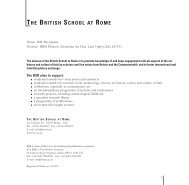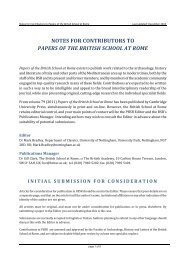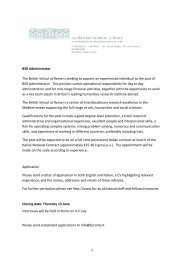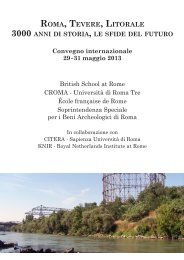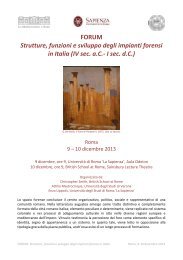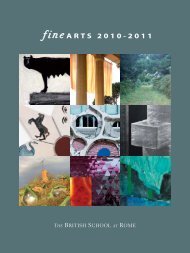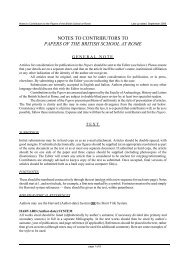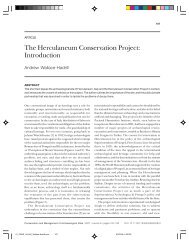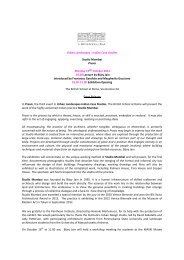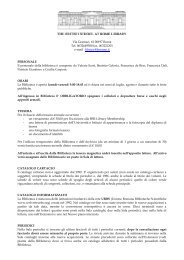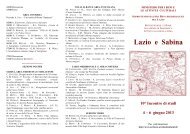Fine Arts 2012-13 - The British School at Rome
Fine Arts 2012-13 - The British School at Rome
Fine Arts 2012-13 - The British School at Rome
Create successful ePaper yourself
Turn your PDF publications into a flip-book with our unique Google optimized e-Paper software.
Anne-Marie Creamer<br />
For the last ten years of his life Italian writer Luigi Pirandello wanted to make a film th<strong>at</strong> could act as a precursor to his seminal 1921<br />
meta-play Six Characters in Search of an Author. It focused on his meetings with a Roman family, which acted as a c<strong>at</strong>alyst for the cre<strong>at</strong>ive<br />
development of his famous play and was to conclude with the premier of his play <strong>at</strong> Te<strong>at</strong>ro Valle, <strong>Rome</strong>’s oldest working the<strong>at</strong>re. In effect<br />
this meant Pirandello’s film concludes with the event of the first public present<strong>at</strong>ion of the play, the two works forming a kind of loop.<br />
He tried and failed to get Tre<strong>at</strong>ment for Six Characters made thirty-nine times.<br />
During my Scholarship <strong>at</strong> the <strong>British</strong> <strong>School</strong> <strong>at</strong> <strong>Rome</strong> in <strong>2012</strong> I adapted Pirandello’s original 1935 tre<strong>at</strong>ment, now narr<strong>at</strong>ed by veteran<br />
Italian actor Norman Mozz<strong>at</strong>o and indeed set the final quarter of the film <strong>at</strong> Te<strong>at</strong>ro Valle. This has been underpinned by the fact th<strong>at</strong> this<br />
influential 1724 the<strong>at</strong>re is under occup<strong>at</strong>ion, now run by Fondazione Te<strong>at</strong>ro Valle Occup<strong>at</strong>o, considered one of the most important<br />
occupied experiments in Europe. Te<strong>at</strong>ro Valle Occup<strong>at</strong>o collabor<strong>at</strong>ed with me, giving me on-going access to the the<strong>at</strong>re as well as<br />
supporting work with actors and lighting technicians. Pirandello’s film is then not just set in the loc<strong>at</strong>ion he wished but also within a newly<br />
intense social and political space whose urgencies add new dimensions to the underlying risks of Pirandello’s unrealized project.<br />
Apart from a single sequence the loc<strong>at</strong>ions of this Pirandello film – which also fe<strong>at</strong>ures Lo Studio di Luigi Pirandello and Fondazione Micol<br />
Fontana – has been lit and filmed without actors. This is part of my deliber<strong>at</strong>ely oblique approach to Pirandello’s text, exploring wh<strong>at</strong> can<br />
be called a ‘cinema of the mind’. I have considered Pirandello’s film as kind of ruin and from its fragments I sought not to make the film<br />
in its entirety but instead to construct one film around the paradoxical lures and failures of another, absent film.<br />
Made with the kind support of: Fondazione Micol Fontana, Lo Studio di Luigi Pirandello, Fondazione Te<strong>at</strong>ro Valle Occup<strong>at</strong>o.<br />
20<br />
<strong>Fine</strong> <strong>Arts</strong> <strong>2012</strong>-20<strong>13</strong>



